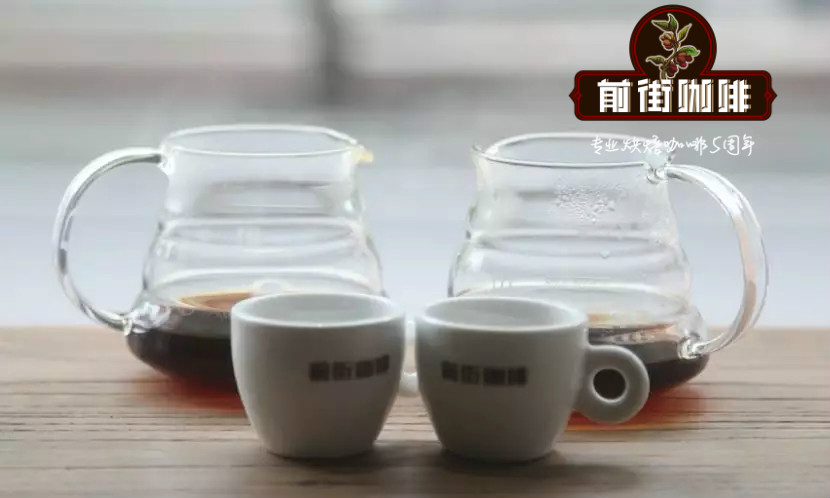Is the coffee sour in Brazil? How should I drink Brazilian coffee? What are the characteristics of Brazilian coffee?

The characteristics of Brazilian coffee
Brazilian coffee generally refers to coffee produced in Brazil. There is a wide variety of Brazilian coffee, the vast majority of which are unwashed and sun-dried, classified according to the name of the state of origin and the port of transport. Brazil has 27 states and 17 states produce coffee, but four of them produce the largest, accounting for 98% of the country's total output. The taste of Brazilian coffee has a low sour taste, with the sweet and bitter taste of coffee, the entrance is very smooth, but also with a hint of grass aroma, slightly bitter in the fragrance, smooth and smooth, with a pleasant aftertaste.
The origin of Brazilian coffee
Brazilian coffee generally refers to coffee produced in Brazil. There are many kinds of Brazilian coffee, and like other Arabica coffee, Brazilian coffee is called "Brazils" to distinguish it from "Milds" coffee. The vast majority of Brazilian coffee is unwashed and sun-dried and is classified according to the name of the state of origin and port of transport. Brazil has 27 states, 17 of which produce coffee, but four of them produce the largest, accounting for 98 per cent of Brazil's total output: Parana, SaoPaulo, MinasGerais and EspiritoSanto, with the southern state producing the most, accounting for 50 per cent of total production.
The production of coffee is mainly concerned with,
① production ② diseases and insect pests ③ quality in terms of the stability pursued by agriculture, the first priority is production.
In addition, 80% of Brazilian coffee is dried, and the remaining 20% is semi-dried and washed. Its coffee taste characteristics are different, but high-quality coffee slightly tends to use semi-dry treatment. However, the drying method still has a deep-rooted popularity. When it comes to the difference between drying and semi-drying.
Drying method
The so-called drying method is the way in which the harvested coffee cherries go directly into the drying process after rough selection, and the raw beans are removed after shelling. It is a traditional Brazilian method, and the Japanese are also very familiar with it, and it can also be said to be the origin of Brazilian coffee.
Drying condition of semi-dry coffee
In pursuit of delicious Brazilian coffee. The export specifications of Brazilian coffee are classified and equal. This export specification is determined by the number of defective beans mixed with beans and the size of beans, so the number of mixed beans is small and the larger the beans are, the higher the specification is, but Brazil has a wide range of coffee producing areas and the coffee characteristics of various producing areas are very obvious. Although the above refining method will change the nature of the taste, it has nothing to do with the Brazilian export specifications.
Coffee plantations in Brazil range from large farms mechanized on flat land to small farms harvested artificially in mountain areas. There are no shade trees for shade in Brazilian agricultural gardens. Coffee trees are exposed to the sun to grow into fruit. In fact, this condition has some problems in making delicious coffee. Coffee fruits that have been exposed to sunshine for a long time are instantly ripe. On the other hand, sweet and mature coffee must go through the temperature difference between cold and hot, which has a lot to do with the limitation of sunshine time.
The coffee cultivated in the flat large coffee plantation at an altitude of 850 MULTHI 1200m is mostly neutral coffee with a slightly smooth taste.
In contrast, the coffee produced in the mountains in Brazil is slightly higher above sea level and the sunshine time is limited due to the slope of the hillside. As a result, the coffee fruit can be ripe on the tree for a longer time, so it can harvest coffee with high maturity, sweet and sour taste. (for example, tomatoes are also ripe on trees. The fruits are sweet, rich and delicious! )
Mechanized flat-land large agricultural garden
Both complimentary coffee and commercial coffee, which represent Brazilian coffee, are produced in this type. The coffee has a smooth taste and is suitable for use in coffee that is easy to mix, such as mixed coffee.
Important Notice :
前街咖啡 FrontStreet Coffee has moved to new addredd:
FrontStreet Coffee Address: 315,Donghua East Road,GuangZhou
Tel:020 38364473
- Prev

What is Martinique coffee? Martinique Coffee History Martinique Coffee production
Professional coffee knowledge exchange more coffee bean information please follow the coffee workshop (Wechat official account cafe_style) Martinique coffee Martinique Island (Martinique) is a small island and the birthplace of Central American coffee, but it produces very little coffee today. The first coffee tree in the Western Hemisphere was created by Gabriel Mathieu de in the early 1820s.
- Next

What is Colombian emerald coffee? How should I drink Colombian emerald coffee?
Professional coffee knowledge exchange more coffee bean information please follow the coffee workshop (Wechat official account cafe_style) Colombia is rich in coffee production, has always lost only to Brazil, is the second largest coffee producer, however, between 2003 and 2007, it was overtaken by Vietnam and is now the world's third largest coffee producer, and more than 2 million people in Colombia rely on coffee production.
Related
- Detailed explanation of Jadeite planting Land in Panamanian Jadeite Manor introduction to the grading system of Jadeite competitive bidding, Red bid, Green bid and Rose Summer
- Story of Coffee planting in Brenka region of Costa Rica Stonehenge Manor anaerobic heavy honey treatment of flavor mouth
- What's on the barrel of Blue Mountain Coffee beans?
- Can American coffee also pull flowers? How to use hot American style to pull out a good-looking pattern?
- Can you make a cold extract with coffee beans? What is the right proportion for cold-extracted coffee formula?
- Indonesian PWN Gold Mandrine Coffee Origin Features Flavor How to Chong? Mandolin coffee is American.
- A brief introduction to the flavor characteristics of Brazilian yellow bourbon coffee beans
- What is the effect of different water quality on the flavor of cold-extracted coffee? What kind of water is best for brewing coffee?
- Why do you think of Rose Summer whenever you mention Panamanian coffee?
- Introduction to the characteristics of authentic blue mountain coffee bean producing areas? What is the CIB Coffee Authority in Jamaica?

